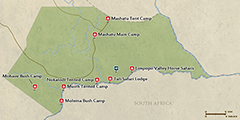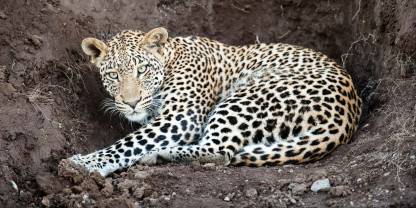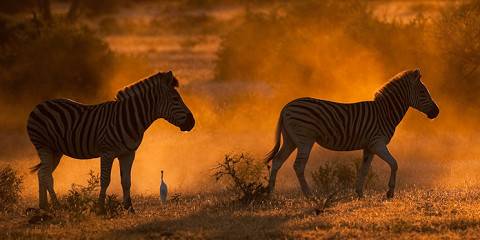Northern Tuli Game Reserve spans more than 720km²/278mi² of privately owned land in the Tuli Block area and is a fabulous wildlife destination. It incorporates several private concessions, including Mashatu Game Reserve and Tuli Safari Lodge. Wildlife viewing is excellent, with abundant elephants and habituated leopards. Expect to enjoy a number of activities as well.

-
Best Time To Go
- May to September (Dry conditions, best for wildlife viewing)
-
High Season
- May to October and December to mid-January (The park doesn’t get busy)
-
Size
- 720km² / 278mi²
-
Altitude
-
517-677m /1,696-2,221ft
 View Photos
View Photos
 View Photos
+24
Photos
View Photos
+24
Photos
 Open Map
Open Map
Pros & Cons
- Excellent wildlife viewing, especially leopard and elephant
- Off-road driving is permitted
- with a scientist are offered
- A variety of adventure and other activities are possible
- Several accommodations options are available
- Beautiful scenery
- Limited variety of animals, with buffalo and rhino absent
- Self-drive safaris are not permitted
Wildlife
Northern Tuli offers high-quality wildlife viewing. Elephant-lovers are in for a treat and this is also a great place to see predator behavior. Leopards thrive in this habitat, and the scarce vegetation makes it possible to track them. Lion, cheetah and wild dog are regularly spotted as well. Some antelope to look out for include klipspringer, waterbuck, impala and eland, the largest antelope in Africa.
More about Northern Tuli’s wildlifeScenery
Tuli lies in a semi-arid region with a variety of landscapes, including along the riverbanks, sandstone outcrops, massive rock formations and . A well-known landmark is Solomon’s Wall, a 30m-/100ft-high basalt dike.
Activities
As in most Botswana reserves, guided are the main activity here, and these may include night drives. Self-drive safaris are not permitted. Although options can vary between lodges, , mountain biking, horseback riding and hot-air ballooning are all possible within the reserve.
Weather & Climate
The Northern Tuli reserve has a semi-arid climate characterized by a mild, dry winter (April to October) and a hot, wet summer (November to March). Warm clothing is a must for early morning in the heart of winter, when it can get very chilly. By contrast, even though December through February is the hottest time of year, the early morning climate is perfect for getting out and about.
More about the weather and climateBest Time To Visit
The rivers of the area draw thirsty animals in the drier months, from May to September. These animals attract predators which, in turn, attract more visitors to the reserve, although it rarely feels crowded. If you prefer your sky to be bright rather than hazy, and your vegetation as lush as possible, you may want to visit in the wetter months. This is also the best time for birding and when baby animals might be spotted taking their first steps.
More about the best time to visit



